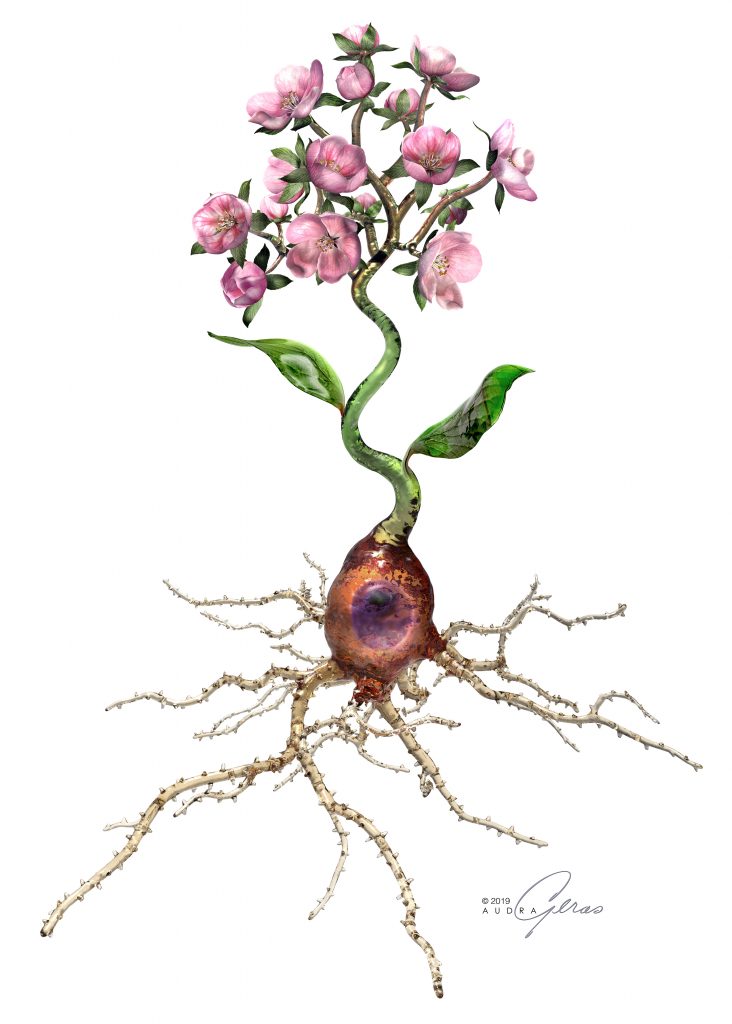Neuroplasticity is a subject I have been extremely interested in ever since reading Dr. Norman Doidge’s ground-breaking and inspirational book, The Brain That Changes Itself. The illustration I’m featuring in this post was inspired by my continued reading on this fascinating subject, as well as my personal exploration of techniques used to encourage positive neuroplasticity.
This is a conceptual 3D image of a brain neuron whose axon ends in multiple blossoming branches. It symbolizes positive neuroplasticity. Neuroplasticity is defined as the brain’s ability to grow new neurons and neural connections. We now know that this growth takes place throughout our lifetimes and that we can promote the weakening of abnormal or negative neural pathways, using a variety of techniques, replacing them with new, healthier, or more positive neural pathways. This is of special importance in conditions such as OCD, generalized anxiety disorder and neuropathic pain. An understanding of neuroplasticity has also revolutionized the treatment of stroke patients and other brain injuries.
This flowering neuron, created in 3D in the look of blown glass, represents the possibility of directing positive neuroplastic changes in our neural pathways that may lead to a healthier and happier life.

